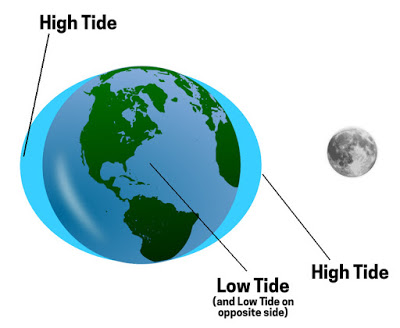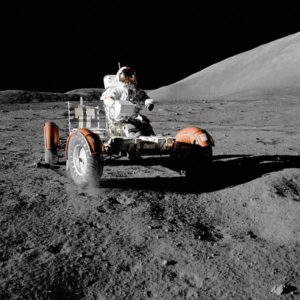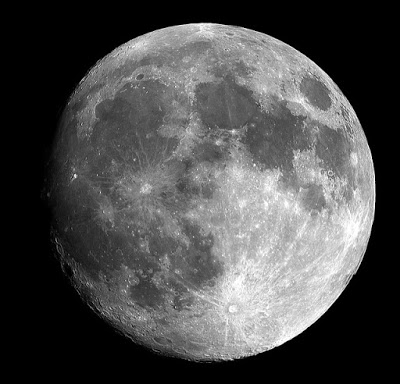 We see it every night, and without it, things would be very different here on Earth. Here’s some facts you might have missed about that big rock over our heads – the Moon.
We see it every night, and without it, things would be very different here on Earth. Here’s some facts you might have missed about that big rock over our heads – the Moon.
Moon Facts
The moon is slowly moving away from Earth. It moves about 3.8 cm every year, and in 50 billion years it will take the moon about 47 days to orbit the Earth instead of its current 27.3 days.
Currently the most widely held theory on how the Moon was made is that an object the size of Mars smashed into Earth. The collision caused a mass of debris to orbit the Earth, and these pieces slowly began to gather together over a long period of time. This collection of rock and particles is what eventually formed the Moon we see today.
The Moon isn’t exactly round as it appears, it’s actually shaped like an egg. The Moon has its center of mass about 1.2 miles away from its geometrical center which gives it, albeit an indiscernible, egg shape.
#5
Tides on Earth happen because of the gravitational pull of the Moon. When one side of Earth is facing the Moon, the oceans are pulled on both sides of the planet. A bulge (high tide) happens because the Moon is pulling water toward it, and on the opposite side of the planet, the bulge (also high-tide) happens because the Moon is “pulling” the Earth away from the water. Of course low-tide occurs on the other two sides. You can always know if it is high tide when the Moon is directly overhead, or you know it’s on the opposite side of the planet.
#6
There are small moonquakes on the Moon. Astronauts discovered this using seismographs during their missions there. They are believed to occur a few miles under the surface and result in cracks in the surface. This has led scientists to theorize that the moon has a molten center similar to the one here on Earth.
#7
The Russians were actually the first to get close to the Moon. They sent Luna 1 toward it in 1959, and the craft came within 3,725 miles of the Moon. Luna 1 was supposed to impact the Moon, but a malfunction caused it to fly by. It may seem like a large distance, but given the distance from the Earth to the Moon is 251,970 miles at its farthest point, it’s pretty darn close. Things went better for the Russians in the same year when they impacted Luna 2 on the Moon’s surface. The U.S. put its first craft, Ranger 4, on the Moon in 1962 when it crashed intentionally into the surface. In 1966, the Soviets returned once again and were the first to actually land a spacecraft safely (and softly) on the Moon with Luna 9.
#8
Apollo 14 Astronaut, Stuart Roosa, took some seeds with him while in orbit around the Moon during the time Alan Shepard and Edgar Mitchell were on the surface. The seeds were later germinated when they got back to Earth and more than 400 were planted at different places in the country as well as around the world. They came to be known as “Moon Trees” and are still alive and well today.
#9
There was a plan in the late 1950’s that was developed by the U.S. Air Force to detonate a nuclear bomb on the Moon. The top-secret project called Project A119, ‘A Study of Lunar Research Flights’, was to demonstrate the military capability of the U.S. at the height of the Cold War by exploding a nuclear warhead somewhere on the surface of the Moon.
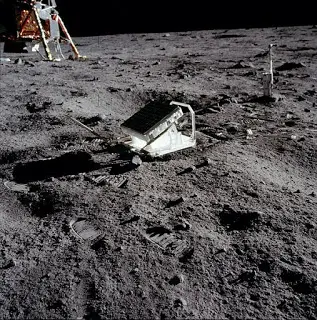 #10
#10
There is a 2-foot wide panel with 100 mirrors sitting on the Moon’s surface pointing at Earth. It’s used to accurately measure the distance from the Earth to the Moon. Neil Armstrong and Buzz Aldrin placed it on July 21, 1969 just before the end of their final moonwalk. It’s the only science experiment from the Apollo missions that continues to run to this day. Telescopes here on Earth send laser pulses off the mirrors on the Moon and intercept the returning pulse to get the distance measurement.
#11
NASA has discovered water in the form of ice on the moon. After the LCROSS probe impacted the lunar south pole of the moon in 2009, scientists found the equivalent of around twenty-four gallons of water in the crater where the probe impacted. They believed water was present there since the permanently shadowed craters could keep water frozen at the surface.
#12
The Moon has extreme temperature variations because of its lack of atmosphere. It can get as hot as 260 degrees Fahrenheit and as cold as minus 280 degrees Fahrenheit.
#13
The Apollo missions brought back 842 pounds of lunar rock and soil from the Moon while Soviet spacecraft returned about three-quarters of a pound of material.
There is definitely a lot of trash left on the Moon from all those space missions. In all, there is about 400,000 pounds of man-made material sitting on the lunar surface. Some things that have been left behind: 70 different spacecraft, which includes crashed orbiters and rovers, 96 bags of human waste in one form or another, 2 golf balls, TV cameras, 12 pairs of boots, and many other pieces of equipment. Someone on the moon cleaning crew is going to have to do a lot of work.
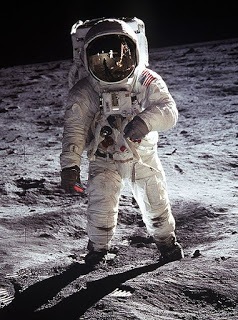 #15
#15
12 people have set foot on the Moon. We all know who the first was, but the last man to do it was Gene Cernan on Apollo 17 in 1972. No human has been back since. Buzz Aldrin was the first person to urinate on the Moon. Okay, it was in his spacesuit, which had the necessary equipment for such a thing, but somebody had to take that historic leap.

